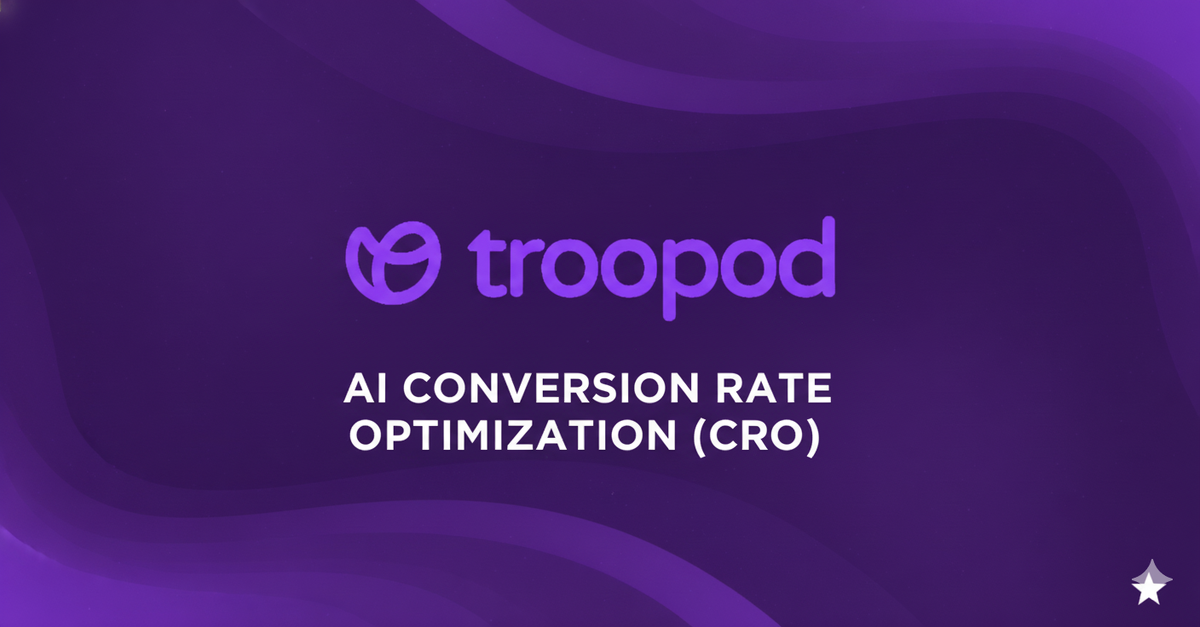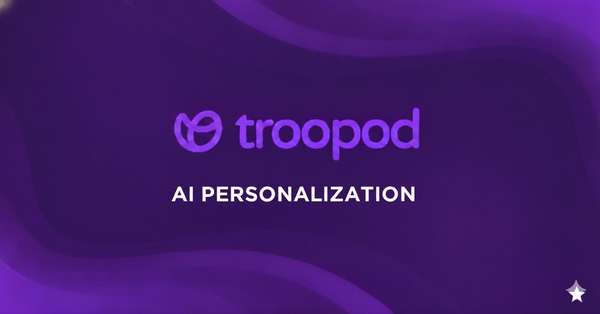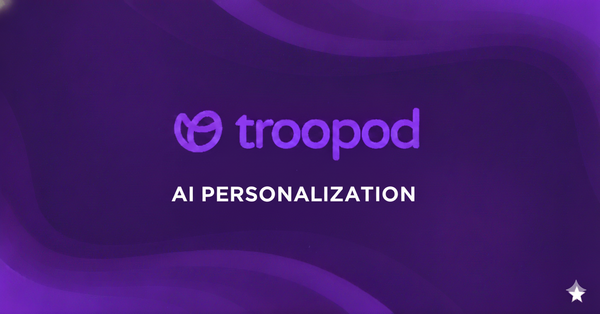AI Conversion Optimization vs Traditional CRO: Why Most D2C Brands Are Leaving Money on the Table

The ₹4 Crore Problem Hiding in Plain Sight
A mid-sized D2C brand spends ₹15 lakhs monthly on Meta ads. Professional creative. Precise targeting. Strong CTRs.
They're running 45 active campaigns. Each one promises something specific:
- 12 ads about premium quality
- 10 ads emphasizing fast delivery
- 8 ads showcasing affordability
- 15 ads featuring specific products
Someone clicks an ad expecting one thing. They land on a generic homepage. The specific promise that got them to click? Nowhere to be found.
They leave.
This isn't incompetence. This is everyone.
Here's what's really happening: Traditional CRO optimized that homepage. Multiple A/B tests over 8 months. Heatmaps analyzed. Copy refined. Layout tested. Conversion improved from 2.1% to 2.6%.
The team celebrated. Management was happy.
But that "optimized" page is still wrong for 80% of the ads sending traffic there.
The Traditional CRO Blindspot
Traditional conversion rate optimization asks: "How do we make this page convert better?"
That's the wrong question.
The right question: "Does this page match what the ad promised?"
How Traditional CRO Works
Step 1: Pick your main landing page (usually homepage or primary product page)
Step 2: Form hypotheses
- Maybe the headline needs work
- Maybe the CTA should be red instead of blue
- Maybe testimonials should move up
- Maybe the hero image needs changing
Step 3: Run A/B tests
- Split traffic 50/50
- Wait 3-4 weeks for statistical significance
- Declare winner
- Implement
Step 4: Move to next test
Step 5: Repeat for 6-12 months
Result: Conversion improves from 2% to 2.6%. Nice 30% lift.
But here's the problem:
You're running 50 different ads with 50 different promises, all sending traffic to the same "optimized" page.
That page was optimized for who exactly? The average visitor?
The average visitor doesn't exist.
The Math That Destroys Traditional CRO
Let's be specific about what this costs.
Scenario: Mid-sized D2C brand
- Monthly ad spend: ₹15 lakhs
- Traffic: 50,000 visitors/month
- Active campaigns: 45
- Landing pages: 1 (the "optimized" homepage)
- Conversion rate: 2.4% (after 8 months of traditional CRO)
- Monthly orders: 1,200
- Average order value: ₹2,400
- Monthly revenue: ₹28.8 lakhs
Here's what's actually happening:
Ad Group 1: Premium quality focus (12 ads)
- Traffic: 14,000 visitors
- Current conversion: 2.1% (294 orders)
- What they expect: Premium product details, quality certifications
- What they get: Generic homepage
- If matched properly: 4.2% conversion (588 orders)
- Lost revenue: ₹7.05 lakhs/month
Ad Group 2: Fast delivery focus (10 ads)
- Traffic: 11,000 visitors
- Current conversion: 2.3% (253 orders)
- What they expect: Delivery speed highlighted, logistics info
- What they get: Generic homepage
- If matched properly: 4.8% conversion (528 orders)
- Lost revenue: ₹6.6 lakhs/month
Ad Group 3: Affordability focus (8 ads)
- Traffic: 9,000 visitors
- Current conversion: 2.6% (234 orders)
- What they expect: Pricing, value propositions, discounts
- What they get: Generic homepage
- If matched properly: 5.1% conversion (459 orders)
- Lost revenue: ₹5.4 lakhs/month
Ad Group 4: Specific products (15 ads)
- Traffic: 16,000 visitors
- Current conversion: 2.5% (400 orders)
- What they expect: The exact product they saw
- What they get: Generic homepage (product buried somewhere)
- If matched properly: 6.2% conversion (992 orders)
- Lost revenue: ₹14.2 lakhs/month
Total monthly revenue loss: ₹33.25 lakhs
Annual revenue loss: ₹3.99 crores
The "optimized" landing page is costing nearly ₹4 crores annually because it's optimized in isolation from the ads driving traffic.
Why Traditional CRO Can't Fix This
"Just create separate landing pages for each ad group!"
Obvious solution, right? Here's why it doesn't happen:
Option 1: Build separate pages manually
- 45 active ads need 15-20 distinct landing pages
- Design time: 4-6 hours per page
- Development: 3-5 hours per page
- Copywriting: 2-4 hours per page
- Testing/QA: 2 hours per page
- Total: 11-17 hours per page
- Total for 20 pages: 220-340 hours (8-12 weeks)
- Cost: ₹8-15 lakhs
Now the killer: Your ad campaigns change.
- New products launch
- Seasonal promotions rotate
- Creative gets refreshed
- Targeting shifts
- Competitors force pivots
Timeline to update 20 pages: Another 6-8 weeks and ₹5-8 lakhs.
By the time you finish, campaigns have changed again. You're perpetually behind.
Option 2: Run traditional CRO on multiple pages
Math check:
- 20 landing pages
- Need 35,000-40,000 visitors per test for significance
- Total needed per round: 700,000-800,000 visitors
- Your monthly traffic: 50,000
- Months to complete: 14-16 months
Nobody has that time or budget.
The Seven Fatal Flaws of Traditional CRO
Fatal Flaw #1: Linear Testing in an Exponential World
Traditional: Test one thing at a time.
- Week 1-3: Test headline
- Week 4-6: Test hero image
- Week 7-9: Test CTA
- Week 10-12: Test social proof
12 weeks. 4 learnings.
You had ideas for 30 elements. At one test per 3 weeks: 90 weeks (21 months) to test everything.
By then: Market changed. Competitors evolved. Insights outdated.
Bangalore fashion brand reality:
- Planned tests: 32
- Completed in 10 months: 18
- Invalidated by platform updates: 6
- Actual learnings: 12 in 10 months
Competitor using AI: Ran equivalent of 400+ tests, learning 33x faster.
Fatal Flaw #2: The False Positive Epidemic
At 95% confidence, 1 in 20 "winning" tests is pure statistical noise.
Study of 2,847 A/B tests across Indian D2C:
- 34% maintained winning margin
- 41% regressed partially
- 18% regressed completely to baseline
- 7% went negative (worse than original)
66% of "winners" don't stay winners.
Fatal Flaw #3: Sample Size Prison
For statistical significance:
- Need: 350-400 conversions per variant
- At 2% conversion: 17,500-20,000 visitors per variant
- Simple A vs B: 35,000-40,000 total visitors
Brand with 15,000 monthly visitors:
- Can run: 1 test per month
- Can't do multi-variant testing
- Can't test segments separately
- Testing velocity: Glacial
Pune brand reality:
- Monthly traffic: 18,000
- Tests possible: 1 per month
- Tests needed: 50+
- Years to complete: 4.2 years
Fatal Flaw #4: Interaction Blindness
Traditional testing tests elements in isolation. But elements interact.
Example:
- Test 1: Urgent headline wins (+12%)
- Test 2: Premium imagery wins (+8%)
- Test 3: Scarcity CTA wins (+9%)
Traditional conclusion: Combine all three.
Reality: This combination was never tested together.
What actually happens:
Urgent headline + scarcity CTA = too aggressive, destroys trust. Premium imagery + aggressive tactics = conflicting message.
Combined result: -4% (worse than control)
Fatal Flaw #5: Human Bandwidth Bottleneck
Traditional CRO requires per test:
- Data analysis: 4-6 hours
- Hypothesis: 2-3 hours
- Design: 4-8 hours
- Development: 2-4 hours
- Monitoring: 30 min daily × 21 days
- Analysis: 3-5 hours
- Implementation: 2-4 hours
Total: 40-60 hours per test
At one specialist (₹12-18L annually):
- Capacity: 20-25 tests per year
- Cost per test: ₹48,000-₹72,000
Want to test 100 ideas? Need 4-5 specialists (₹60-90L) for 12-15 months.
Human-dependent processes don't scale.
Fatal Flaw #6: Context Ignorance
Traditional A/B testing: Everyone sees Variant A or B.
Reality: Different visitors need different experiences:
- First-time vs returning
- Mobile vs desktop
- Metro vs tier 2
- Instagram vs Google
- Morning vs evening browsers
Traditional solution: Run separate tests for each segment.
- 6 segments × 5 elements = 30 test series
- At 3 weeks each: 90 weeks (21 months)
Nobody does this. So traditional CRO optimizes for average = sub-optimal for everyone.
Fatal Flaw #7: The Permanent Winner Fallacy
Traditional CRO finds a "winner" and stops.
Reality: Winners don't stay winners.
Why performance changes:
- Seasonality (festival vs non-festival)
- Novelty effect (wears off in 30 days)
- Traffic mix changes
- Platform updates
- Competitive response
Traditional CRO declared winner and stopped. Reality kept changing.
How AI Conversion Optimization Fixes Every Flaw
AI Solution #1: Parallel Exponential Testing
Instead of testing one element at a time, AI tests:
- 12 headline variations
- 8 image options
- 6 CTA copies
- 5 social proof placements
All simultaneously.
Total combinations: 2,880 possible experiences.
Traditional would need 2,880 sequential tests (impossible). AI tests all in parallel.
Bangalore SaaS result:
- Traditional timeline for 8 elements: 24 weeks
- AI timeline: 18 days
- Found optimal for 6 visitor segments
- Lift: 94% (vs projected 20-25%)
Learning velocity: 50x faster
AI Solution #2: Continuous Adaptation
AI never declares permanent winners. Continuously adapts traffic allocation.
Multi-Armed Bandit Algorithm:
- After 100 visitors: Shift 55% to better performer
- After 500: Shift 70%
- After 2,000: Shift 85%
- Never stops learning
Benefits:
- No false positives
- Less regret (fewer visitors see losing variants)
- Adapts if performance changes
- Learns seasonal patterns
Mumbai electronics comparison (21 days):
Traditional:
- Visitors to losing variant: 10,500 (50%)
- Lost revenue: ₹6.2 lakhs
AI:
- Visitors to losing variants: 3,800 (18%)
- Lost revenue: ₹2.3 lakhs
- Savings: ₹3.9 lakhs during test itself
AI Solution #3: Automatic Segment Optimization
AI automatically identifies 20-40 visitor segments and optimizes each separately.
Pune fashion brand:
Traditional: One homepage, 1.8% conversion
AI segment optimization:
Instagram mobile (new visitors):
- Visual-heavy hero
- Social proof prominent
- First-order discount
- Conversion: 3.4% (+89%)
Google desktop (returning):
- "Welcome back" messaging
- Quick reorder section
- Personalized recommendations
- Conversion: 8.2% (+356%)
Tier 2 mobile (first-time):
- Hindi toggle prominent
- COD highlighted
- Regional testimonials
- Conversion: 2.7% (+50%)
Overall: 1.8% → 4.3% (139% increase)
Without building separate sites—AI dynamically assembles optimal experience per segment.
AI Solution #4: Interaction Detection
AI tests all combinations together, discovers which work for which visitors.
Delhi brand discovery:
For price-sensitive:
- Value headline + lifestyle image + savings CTA = 6.8%
For quality-focused:
- Premium headline + detail image + shop CTA = 5.2%
For convenience-focused:
- Fast delivery headline + usage image + order CTA = 7.4%
Human testing would pick one winner (~5.5% average). AI delivered 6.4% by giving each segment their optimal combination.
AI Solution #5: Learning from Low Traffic
Tier 2 brand (8,000 monthly visitors):
Before AI:
- "Not enough traffic for testing"
- Conversion: 1.3%
- Competing on price only
After AI:
- AI learns from all 8,000 visitors
- Tests 20-30 variations simultaneously
- Discovers tier 2-specific patterns
- Conversion: 3.1% (138% increase)
- Now competes on experience
AI learns from sparse data. Traditional testing needs massive traffic.
AI Solution #6: Zero Human Bottleneck
Traditional CRO team (50 tests/year):
- 2-3 specialists: ₹28-42L
- Designers: ₹12-18L
- Developers: ₹15-24L
- Tools: ₹6-8L
- Total: ₹61-92L
AI CRO:
- Platform: ₹8-15L
- 1 strategy consultant: ₹18-24L
- Total: ₹26-39L
Savings: 58-73% reduction Performance: 3-8x better Speed: 50-70x faster
AI Solution #7: Predictive Intervention
AI predicts abandonment 15-30 seconds before it happens (87-94% accuracy).
Tracks micro-behaviors:
- Mouse toward close button
- Scroll hesitation
- Rage clicks
- Time stagnation
- Tab switching
Bangalore brand impact:
- Traditional: React after abandonment (8% recovery)
- AI: Prevent abandonment (31% recovery)
- 4x better recovery
Why This Matters More in India
Extreme Diversity
- 19 major languages
- Metro vs tier 2 vs tier 3 behavior
- Mobile-first (78% vs global 60%)
- Payment diversity (UPI, COD, cards, wallets)
- Regional patterns
Traditional CRO can't test all segments. AI automatically optimizes each.
AI advantage in India: 2-3x larger than homogeneous markets
Rapid Evolution
- Tier 2/3 adoption: +67% annually
- UPI penetration: 45% → 78%
- Quick commerce emergence
- Payment preferences shifting
Traditional CRO: Too slow. AI: Adapts in real-time.
Traffic Constraints
Indian D2C average: 15,000-40,000 monthly (vs 100K+ Western brands)
Traditional testing needs massive traffic. AI learns from sparse data.
The Bottom Line: Evolution or Extinction
Three types of D2C brands in 2025:
Type 1: The Extinct
- Running one test at a time
- Stuck at 1-2% conversion
- Bleeding market share
Type 2: The Adapting
- Implementing AI CRO now
- Reaching 4-7% conversion
- Building competitive moats
Type 3: The Dominant
- Using AI for 12+ months
- Converting at 5-8%
- Learning so fast competitors can't catch up
The window is closing.
Once competitors build 18 months of AI learning advantage, catching up becomes nearly impossible.
Every month you delay is another month AI-powered competitors are:
- Learning 50x faster
- Converting 3-5x better
- Building data moats you can't penetrate
- Capturing customers you'll never reach
The Revolution Is Here
You're spending ₹8-15 lakhs monthly on ads.
Your ads promise specific things. Your landing page delivers a generic experience "optimized" through 8 months of traditional testing.
But it wasn't optimized for the person who clicked expecting that specific promise.
That's not a traditional CRO problem. That's a promise mismatch problem.
Traditional CRO wasn't designed for 50+ ads with different promises to different audiences.
AI conversion optimization was.





